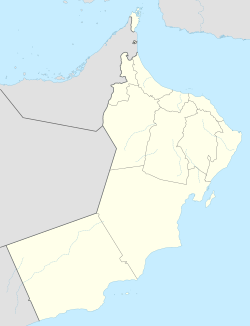This article needs additional citations for verification .(February 2023) |
Al-Mazyunah المزيونة Al-Mazyona, Al Mazyoona | |
|---|---|
Wilayat | |
 Wilayat of Al-Mazyunah in the Dhofar Goverorate | |
| Coordinates: 17°50′55″N52°37′12″E / 17.84861°N 52.62000°E | |
| Country | |
| Governorate | Dhofar |
Al-Mazyunah (Al-Mazyona or Al Mazyoona) is a wilayah (province) of Dhofar in the Sultanate of Oman, [1] near the border with Yemen. There is an international border checkpoint at Al-Mazyunah.
As of 2020, the population was 8,415. [2]
